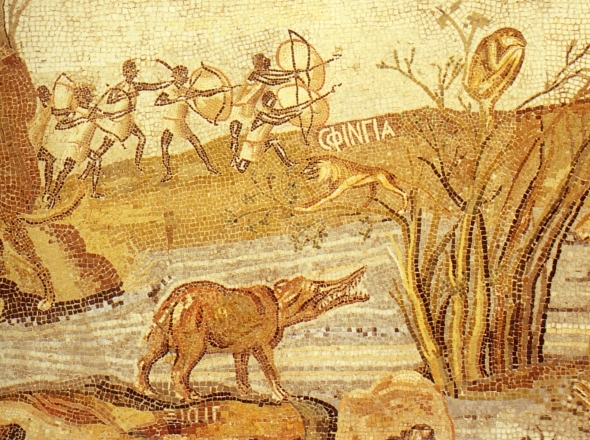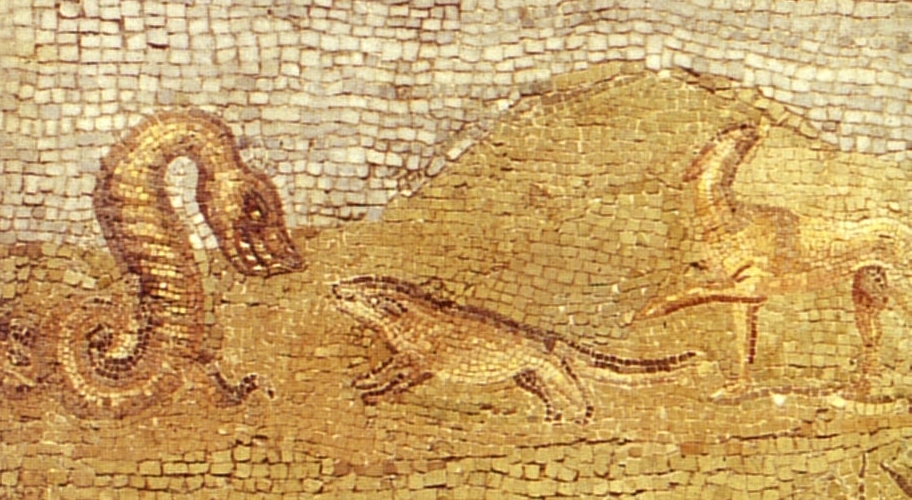So many ancient mosaics survive that we almost take
them for granted and do not really pay attention to them.
But we should !
For they often represent actual scenes of a past long gone or numinous myths and symbols, sending us unusual and important messages about the ancient world, and/or about ourselves...
One of them is the Labyrinth, a recurring pattern of classical Roman mosaics. Although it is more often of a square shape,
 |
| Conimbringa, Portugal. 3rd Century AD |
 |
| Pompeii, Italy, 1st century AD. |
it is also sometimes of circular geometry. This circle shape is probably more ancient as it is the shape of prehistoric labyrinths.
 |
| Avenches, Switzerland, circa 250 AD |
 |
| House of the Labyrinth, Pompeii, 1st century AD |
The abundance of Labyrinths designed and executed by Roman mosaicists clearly show that it still was a very powerful symbol during the first centuries of our era.
When Christianity became the official religion of the Empire, it kept the symbol, often - but not always - removing references to Theseus.
In some cases, Christian Churches simply "recycled" pagan labyrinths by changing their center piece. In Orleansville, Algeria the center of the Labyrinth was reworked to feature a jeu-de-lettres on the words SANCTA ECLESIA (Holy Church).
During the Middle ages labyrinths were incorporated in numerous French and Italian churches. The French Cathedrals of Chartres and Amiens (13th century) incorporate the two widest labyrinths known to us to this day.
 |
| Notre Dame de Chartres, France, early 13th century |
 |
| Notre Dame d'Amiens, France, 1288 |
Both these huge labyrinths are still used today as prayer or meditation paths by visitors to these Churches.
There are also a variety of smaller floor or mural labyrinth in other European Churches .
The one at the wonderful San Vitale Basilica in Ravenna measures about 3.5 meters (11 feet) in diameter. Although originally thought to date from the sixth century, it is now
generally believed to have been built at a much later date, probably during the first half of the 16th century.
 |
| Basilica San Vitale, Ravenna, Italy. |
The Labyrinth is sometimes taken as an analogy for the spiritual quest. The pilgrim or mystic on his way to enlightenment or God follows a convoluted path, with numerous turns, but finally comes to the center, and then follows the same path back to the real world.
The Labyrinth took me to mosaics, in a way I would never have dreamed of...
In the early years of this century, by a strange arrangement of coincidences, causes and conditions - this is how karma operates... - I came to built a Labyrinth for the Episcopal Church of the Nativity in Dothan.
This is not the place to tell this story, and I told it somewhere else. But look at the odds of a French Nuclear Engineer building a prayer Labyrinth in South Alabama...
Based on the geometry of the Chartres Cathedral's, the Nativity Labyrinth measures 14 meters (42 feet) in diameter.
 |
| Dothan, Alabama, Early 21st century |
It is built of regular rectangular and circular pavers. In order to realize the curvature of the path I had to cut most of them. It took 20 months to complete the work.
Just after completion of this prayer labyrinth, I met in France Jean Pierre Soalhat of Mosaic Tahlaos. I was sooo amazed !
Beside the beauty of his work, I also realized the similarity between the techniques of mosaic and the ones I had used - on another scale - to build the Church Labyrinth.
As soon as I'd be back to the USA, I would try myself at mosaics !
I first built a small table, then the portrait of Venus after Botticelli and the 3rd piece I realized was a Labyrinth table.
Made of 3 materials only : Black Granite, Crema Marble and Red Terra Cotta, it represents the Chartres Labyrinth, flanked by classical Roman patterns.
This was my biggest piece so far. This table is so heavy it's probably tornado proof. It is now at a friend's home in Virginia.
C'est la vie ...
If
you are interested in purchasing one of my existing mosaics, would like to discuss a special mosaic or labyrinthine project, or simply discuss the
wonderful art of mosaics, please contact me by email at frederic.lecut@gmail.com or by phone at (334) 798 1639.
You may also



%2C_Ancient_Pella.jpg)
























.jpg)
